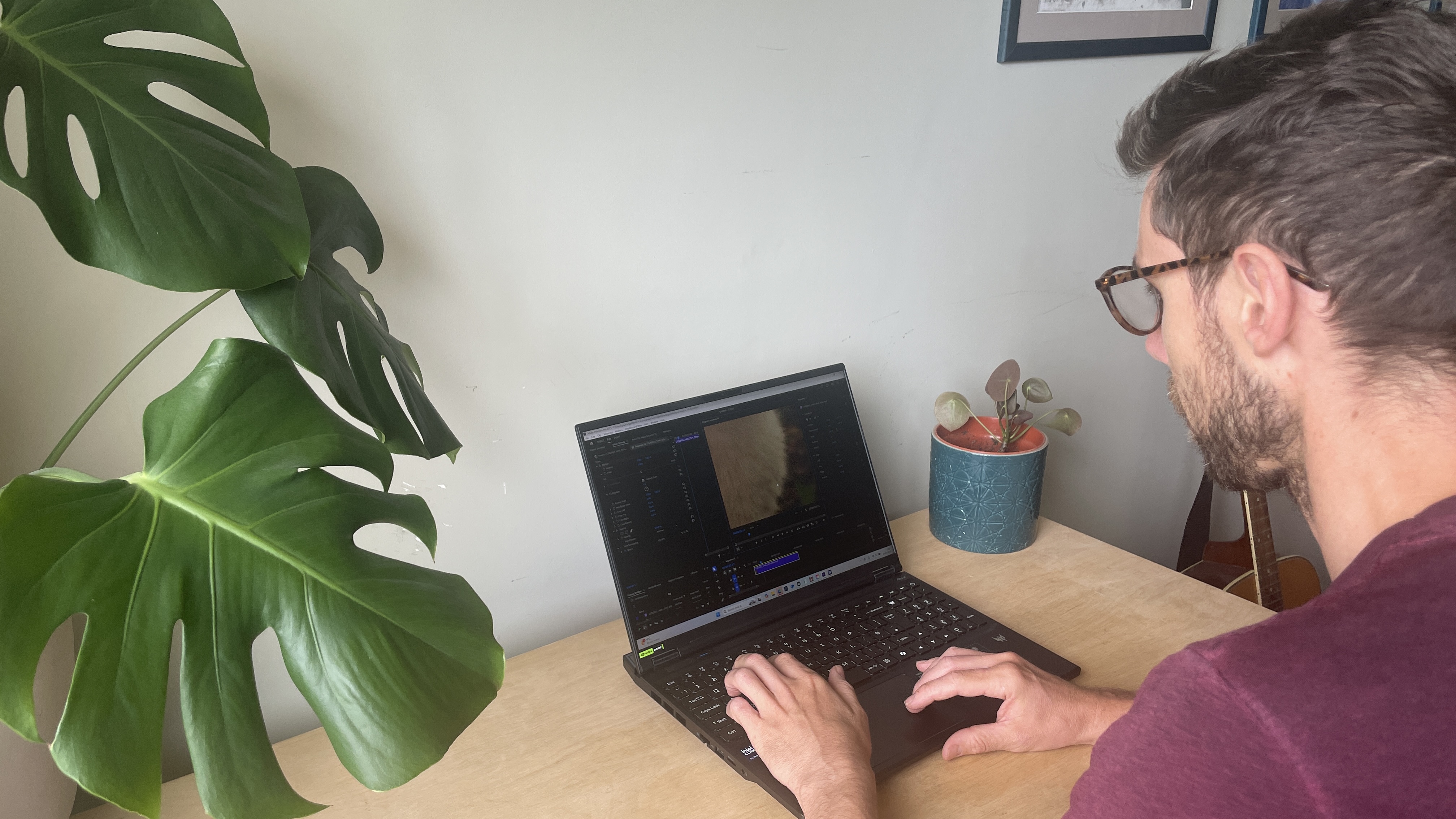Our Verdict
The Acer Predator Helios Neo 16 AI has been a delight to test. With the latest in CPU and GPU technology, this is a laptop that is built for even the most demanding of creative workflows. Unfortunately, all of this power needs a beefier battery than has been supplied, and it means the laptop will only last around three hours before needing a recharge. Beyond performance considerations, this is a well-built laptop that is a joy to use.
For
- Impressive performance, especially for video editing
- Nice port placement
- Well built and nicely designed
Against
- Mid-range CPU performance
- Very poor battery life
- Weight limits portability
Why you can trust Creative Bloq
At Creative Bloq, we test a whole range of different laptops, covering entry-level, budget-friendly machines all the way up to high-end, premium powerhouses. The Acer Predator Helios Neo 16 AI is most definitely the latter.
At £2,199/$2,899, the laptop is far from cheap, but you absolutely get what you pay for. Under the hood is a top-end Intel Core Ultra 9 275HX CPU and discrete NVIDIA GeForce RTX 5070 GPU, which are perfectly paired to deliver outstanding performance.
With that combination, I knew, before I even began benchmarking it, that it was going to be one of the best laptops for video editors and 3D modellers and potentially one of the best laptops for architecture, too. That's a 30,000-foot summary, though; read on as we dive into the nuances of the Predator Helios Neo 16 AI.
Key specifications
CPU: | Intel Core Ultra 9 275HX |
Graphics: | NVIDIA GeForce RTX 5070 |
Memory: | 32 GB, DDR5 |
Storage: | 1TB SSD |
Screen size: | 16-inch |
Screen type: | OLED |
Resolution: | 2560 x 1600px |
Refresh rate: | 240Hz |
Colour gamut: | DCI-P3 100% |
Brightness: | 500 nits |
Ports: | HDMI 2.1 x1, USB-C x2, USB-A x3, Ethernet, microSD card reader, Audio jack |
Wireless connectivity: | WiFi 6E, Bluetooth 5.4 |
Dimensions: | 35.67 x 27.55 x 2.67 x 2.20 cm |
Weight: | 2.22 kg (4.9 lbs) |
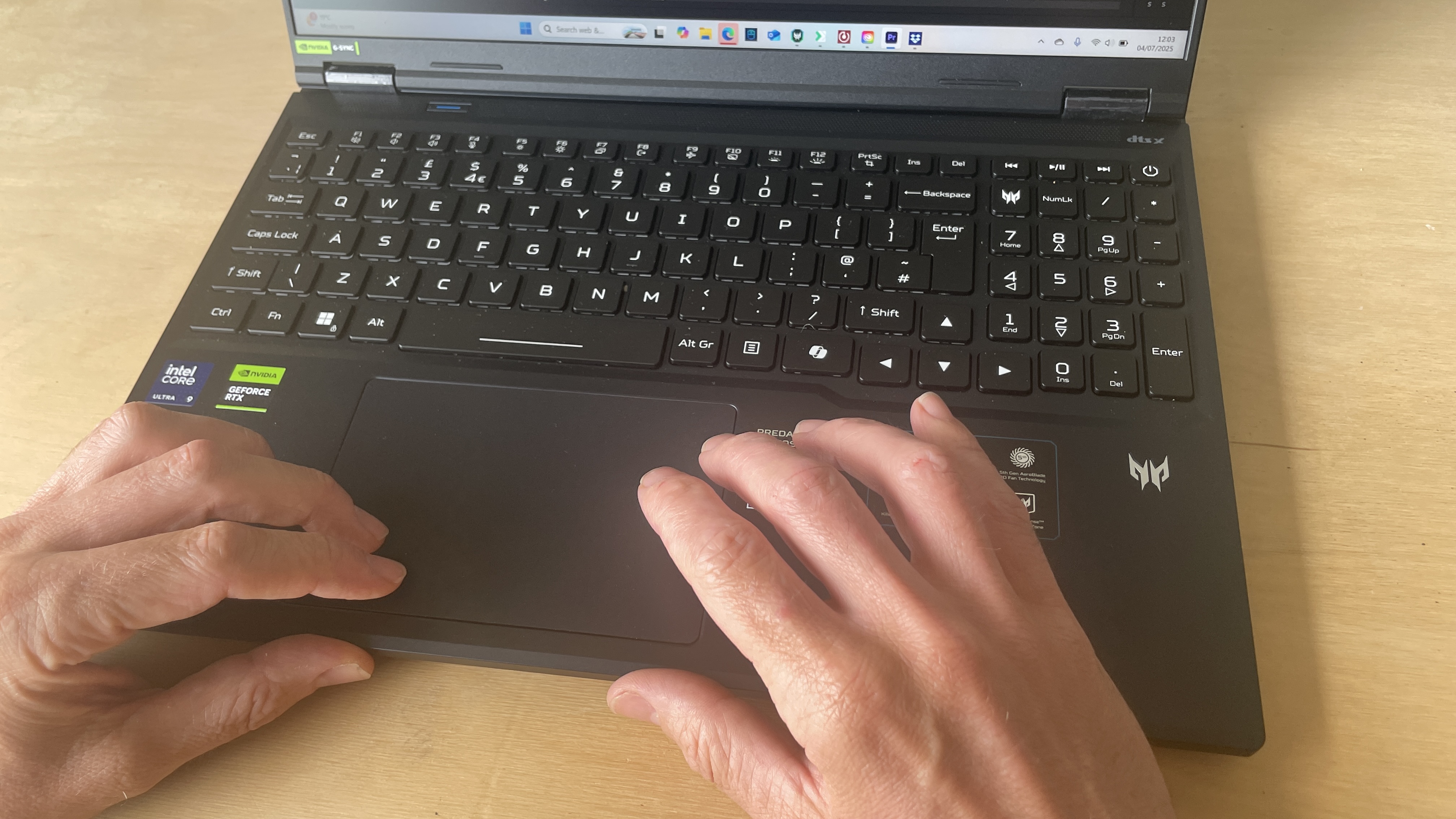
Design, build and display
• Edgy design delivers a fantastic aesthetic
• Well built with robust engineering
I recently tested and wrote about the ASUS V16. It's a 16-inch laptop, weighing in at 1.95 kg (4.29 lbs). That's a portable laptop I can get on board with. The Predator Helios Neo 16 AI, on the other hand, weighs 2.22 kg (4.9 lbs), with the extra 270 grams adding more bulk than I would have liked. I won't be porting this laptop around, and I doubt you will want to either.
Then again, the extra weight can be attributed to the incredible hardware and superior build quality that the laptop oozes. It's very difficult for laptop manufacturers to pack in performance and durability without increasing the weight, but I won't begrudge Acer for that. This is a well-built machine that will stand the test of time, even if it'll just sit on your desk and never see the true light of day.
The OLED display serves up a resolution of 2560 x 1600 pixels, and I can tell you it's really nice to have the extra clarity beyond a standard Full HD alternative. It also boasts a 240Hz refresh rate, which animators, motion graphics artists and gamers will love.
Daily design news, reviews, how-tos and more, as picked by the editors.
The case is made of a black anodised aluminium with a matte finish that looks fantastic but is prone to collecting fingerprint smudges. Sharp corners and harsh bevels give it a classic 'gaming' look, although I doubt creatives will be put off by it.
The hinge sits 2cm forward of the rear edge, which allows for a special strip at the back which houses a transparent top, two USB-C ports, an HDMI port, and a DC connector. I love this design decision, as it keeps power and monitor cables trailing right out the back, ensuring that they stay out of the way.
All other ports are located on the left and right-hand sides with three USB-A, Ethernet, microSD readers, and an audio jack. Acer has really thought about where to position every single one of their ports, and it shows in enhanced usability.
The keyboard and trackpad are pretty standard, although the numpad is a little squashed. As the design limits portability, I would expect most people to have it permanently hooked up to a dedicated keyboard and mouse. I think that would be advisable given the poor performance of the trackpad in particular.
The keys are backlit with LEDs, which I wanted to turn off immediately, but my nine-year-old said was "just so fancy". Let's just say those types of features are subjective.
This is a laptop that will stand the test of time and look fantastic while you concentrate on your creative or gaming endeavours.
Design score: 4.5/5
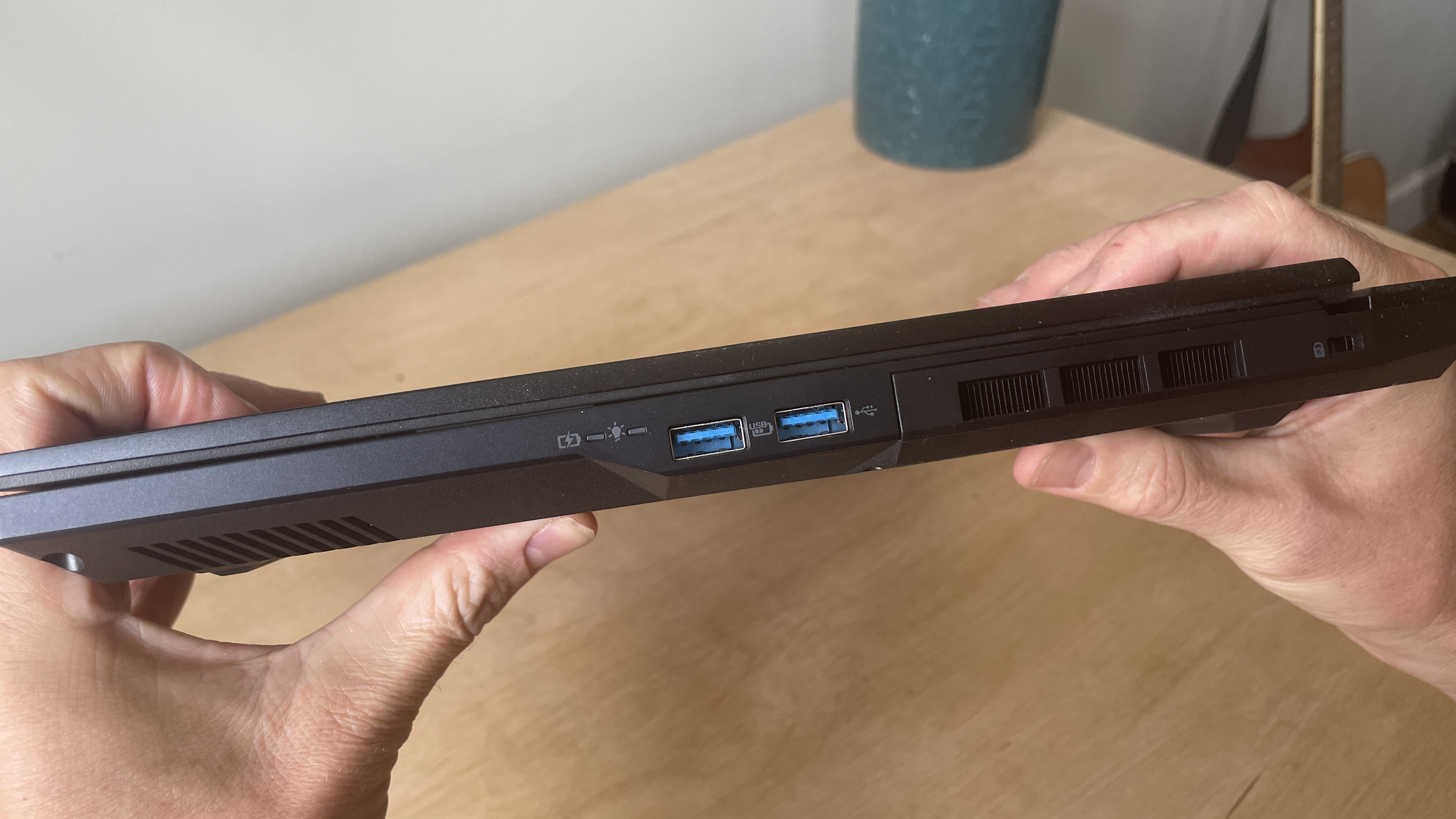
Features
• Cutting-edge CPU from Intel and GPU from NVIDIA
• A small battery given the hardware
First up is the Intel Core Ultra 9 275HX processor, which we first saw at the beginning of 2025. It's part of Intel's Arrow Lake-HX series, designed for high-performance mobile computing. This is a high-end laptop processor that is ideal for demanding tasks like gaming and content creation. More on whether it achieves this in our performance section below.
The Intel CPU is backed up by an NVIDIA GeForce RTX 5070 Ti Laptop GPU with 992 AI TOPS. This GPU is built on Blackwell architecture (GB205 GPU), which delivers excellent performance, efficiency, and ray tracing capabilities compared to the previous Ada Lovelace (RTX 40 series) generation.
We've already covered some of the display specs in the design section, but it's worth noting that it supports 100% of the DCI-P3 colour gamut. This is a gamut that is particularly good for creative applications, particularly those involving video, digital art, and high-fidelity image work.
As you can imagine, all of this hardware is going to need cooling, which is why the laptop has an advanced cooling system with 5th Gen AeroBlade 3D fans. These, alongside precision-engineered airglow and liquid metal grease, help to keep the system working optimally.
The laptop contains a 90 Wh battery, which is a little on the light side, especially given the power-hungry nature of the aforementioned processing units. More on this below.
Feature score: 4.5/5

Benchmark scores
We test every one of our laptops using the same benchmarking software suite to give you a thorough overview of its suitability for creatives of all disciplines and levels. This includes:
• Geekbench: Tests the CPU for single-core and multi-core power, and the GPU for the system's potential for gaming, image processing, or video editing. Geekbench AI tests the CPU and GPU on a variety of AI-powered and AI-boosted tasks.
• Cinebench: Tests the CPU and GPU's ability to run 3D software such as Cinema 4D and Redshift.
• UL Procyon: Uses UL Solutions' Procyon software suite to test the system's ability for AI image generation in Stable Diffusion, its Microsoft Office performance and its battery life in a looping video test.
• Topaz Video AI: We use Topaz Video AI to test the system's ability to upscale video and convert video to slow-motion.
• PugetBench for Creators: We use the PugetBench for Creators benchmarking suite to test the system's ability to run several key tasks in Photoshop and Adobe Premiere Pro, as well as its performance when encoding/transcoding video.
• ON1 Resize AI: Tests the system's ability to resize 5 photos to 200% in a batch process. We take the total time taken to resize the images and divide by 5.
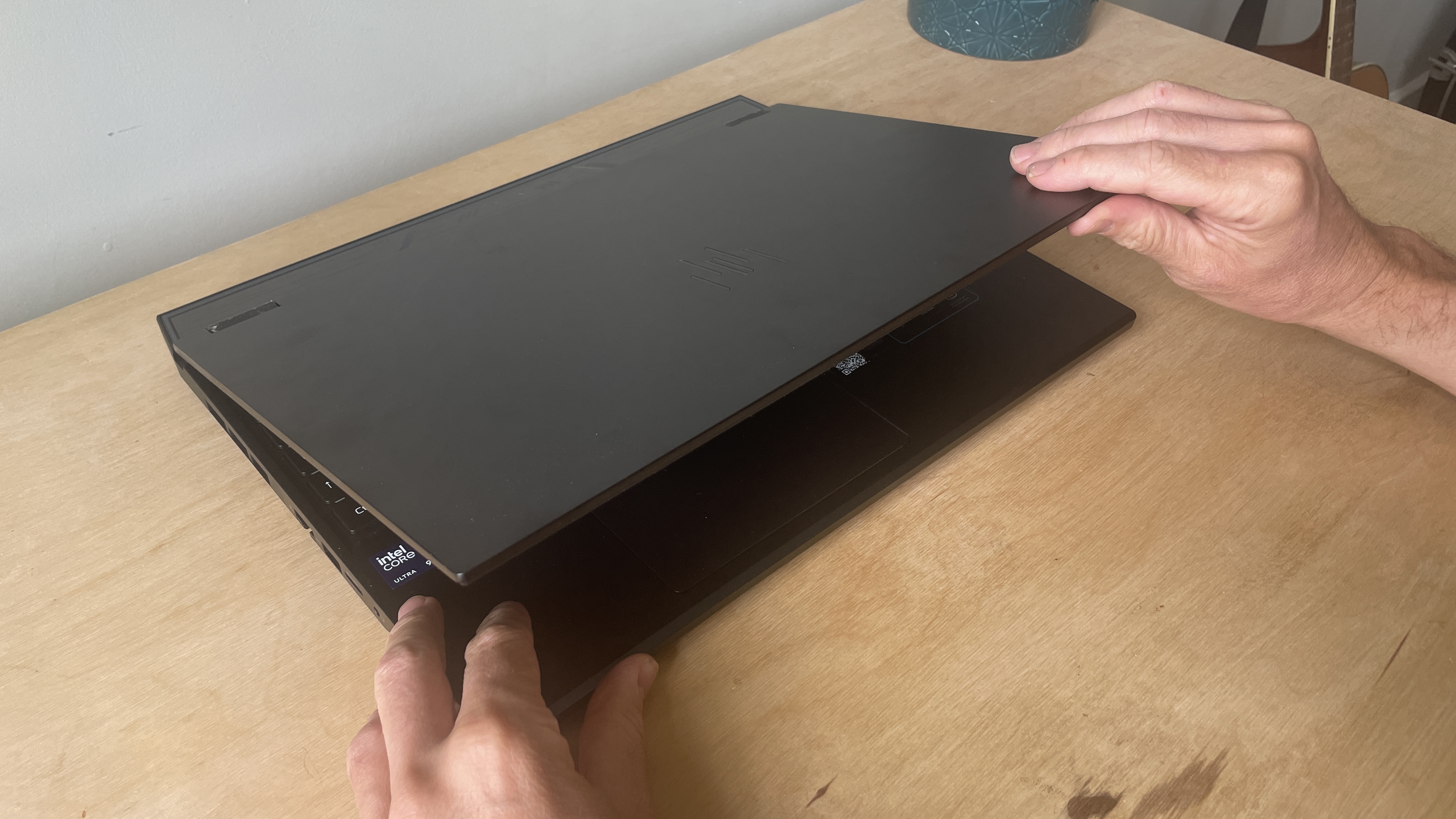
Performance
• Excellent results, especially for video-editing
• Very poor battery performance
As Acer has seen fit to include 'AI' in the name of this laptop, I suggest we begin there. We run Geekbench AI, Topaz Video AI, On1Resize AI, and Procyon Image Generation benchmarks to get a firm idea of how machines perform in this area.
We found the Predator Helios Neo 16 AI to be a mid-range AI performer, which is evidenced across our select tests. If you're solely working with AI image generation or similar, then you'll want something like the Microsoft Surface Pro 12 instead. Comparable performers to the Neo 16 AI are the ASUS ProArt P16 (2025) and ASUS V16.
In terms of photo editing, the Neo 16 AI is a strong part of the chasing pack alongside the likes of the HP Omen Transcend 14 and Dell 16 Plus 2-in-1. All fall short of the MacBook Pro 16 (M3 Max), though, which completely redefines photo-editing performance.
Interestingly, it is the Neo 16 AI that redefines video editing performance. With a score of 80,993, the laptop scores four times the amount that the ASUS V16 managed. That's truly exemplary and clearly demonstrates the laptop's suitability for demanding video-editing workflows.
If you're thinking of using the Neo 16 AI for 3D visualisation and rendering, then you'll be pleased to know it scored well in the Cinebench multi-core test. It was also high-performing when rendering on the GPU if that's a key part of your workflow.
Enough said about the laptop's hardware performance. From the moment of studying the laptop's specs, I had concerns about the battery life, and I hate to say it, but I was right. The NVIDIA GeForce RTX 5070 is known as a power guzzler, and the 90 Wh battery just couldn't cope. Not even lasting 2 1/2 hours, the Neo 16 AI will need to stay permanently plugged in. If you had any hopes of portability, then I imagine they've just been dashed.
All in all, I wouldn't let the battery life put you off, though. This is a high-performing laptop that will deliver for many years to come.
Performance score: 4.5/5
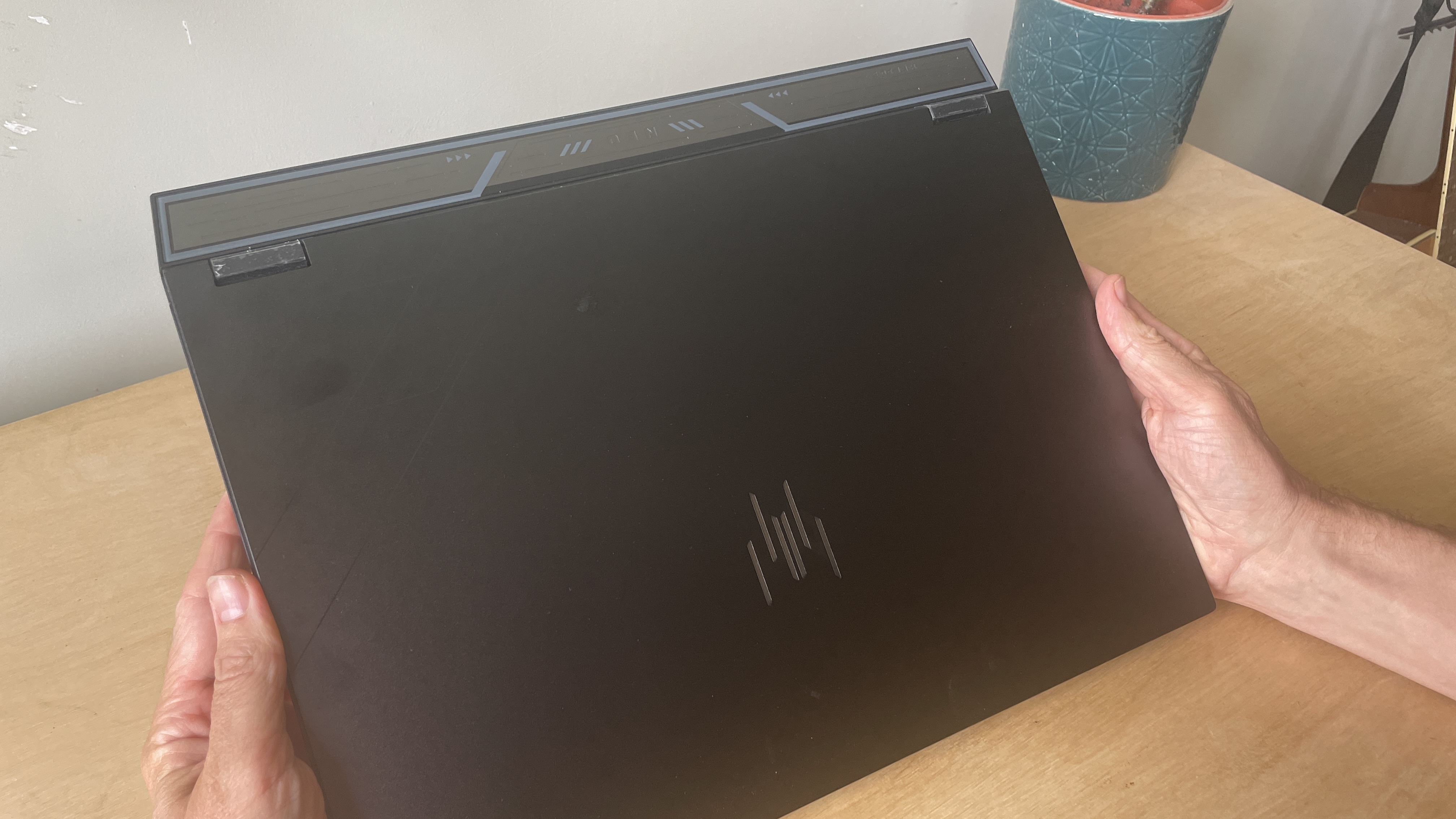
Price
The ACER Predator Helios Neo 16 AI that I've been reviewing costs £2,199/$2,899, although you can get a slightly inferior model for £1,799/$2,439. If you're planning on really pushing the limits of your content creation, then I would highly recommend paying the extra £400. We've not reviewed it yet, but if you'd like ASUS' competitor to this laptop, then you'd be looking at the ASUS ROG Strix G16.
Value score: 4/5
Who is it for?
• Serious high-end creatives and gamers
The Predator Helios Neo 16 AI from Acer is a beast of a machine with the price to match it. The CPU and GPU combination is perfect for powering demanding workflows as well as games that rely on raytracing technology. If you're a casual creative, then this will be more hardware than you need, but serious creatives will lap it up.
Attributes | Notes | Rating |
|---|---|---|
Design: | An edgy-looking laptop with fantastic port placement. | 4.5/5 |
Features: | The latest CPU and GPUs take centre stage in this laptop. | 4.5/5 |
Performance: | A video and photo editing beast that also delivers for gamers. | 4.5/5 |
Value: | A pricey laptop, but given the impressive hardware, you're basically getting what you pay for. | 4/5 |
Buy it if...
- You're regularly pushing your creative applications to the limit
- You're a video editor or 3D visualiser that does a lot of rendering
- You're a gamer who needs to stay ahead of the pack
Don't buy it if...
- You only use Photoshop or similar package on a casual basis
- Your main focus revolves around AI workflows
- You're looking for a budget-friendly laptop
Also consider
This is for all-out gamers who want better battery life than in previous-gen gaming laptops. Mind you, it works really nice for creative pursuits too.
An ultra-thin and light laptop that boasts an incredibly high-performing processor. If you're open to an Apple laptop over and above a Windows one, then the MacBook Air should definitely be in your shortlist.
out of 10
The Acer Predator Helios Neo 16 AI has been a delight to test. With the latest in CPU and GPU technology, this is a laptop that is built for even the most demanding of creative workflows. Unfortunately, all of this power needs a beefier battery than has been supplied, and it means the laptop will only last around three hours before needing a recharge. Beyond performance considerations, this is a well-built laptop that is a joy to use.

Paul is a digital expert. In the 20 years since he graduated with a first-class honours degree in Computer Science, Paul has been actively involved in a variety of different tech and creative industries that make him the go-to guy for reviews, opinion pieces, and featured articles. With a particular love of all things visual, including photography, videography, and 3D visualisation Paul is never far from a camera or other piece of tech that gets his creative juices going. You'll also find his writing in other places, including Creative Bloq, Digital Camera World, and 3D World Magazine.
You must confirm your public display name before commenting
Please logout and then login again, you will then be prompted to enter your display name.
